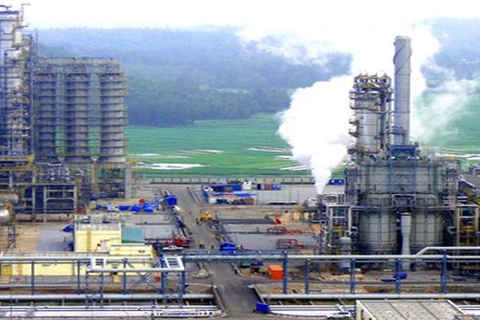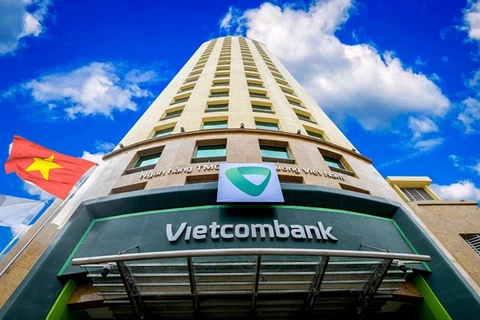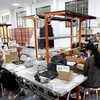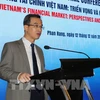Hanoi (VNA) - The pressure to lift the ‘risk cushion’ of banking system has become an urgent issue when deadline to apply the Basel II (the international framework for the assessment of international banks’ capital adequacy) is coming very closely.
Actively seeking for way out
Since the beginning of 2019, the Joint Stock Commercial bank for Foreign Trade of Vietnam (Vietcombank) received good news that after three years of discussion and negotiation, the bank succeeded to sell more than 94 million new shares to Government of Singapore Investment Corporation (GIC), which was equivalent to 2.25 percent of the bank’s ownership. Besides, the bank also sold nearly 17 million new shares to maintain an ownership ratio of 15 percent of share to Japanese bank Mizuho – a Vietcombank’s strategic partner.
With two investment sources of GIC and Mizuho, Vietcombank collected 6.2 trillion VND and its charter capital rose to 37.1 trillion VND dong ( 1.6 billion USD), helping to create a strong foundation for the bank to meet capital adequacy ratio requirements set by the Basel II standards while affirming its leading position in Vietnam’s banking sector.
Through this transaction, State ownership at Vietcombank forecast to reduce from 77.11 percent to 74.8 percent. The rate is quite high which might hinder the bank to carry out its future plans in accordance with the growth and capital demands in in different period.
It is expected that from 2019, Vietcombank will be qualified for higher credit growth target in order to have more condition in term of charter capital and space to growth in 2019.
The Bank for Investment and Development of Vietnam (BIDV) is a State-own bank, which has the largest State ownership of more than 95 percent. Over the past eight years, the bank has looked for strategic partners to sell its shares, but has not succeeded. However, a promising door has opened when BIDV has signed a strategic cooperation agreement with KEB Hana- a Republic of Korea bank, however the information relating to the accord has unknown.
Experts of the Bao Viet Securities Joint Stock Company acknowledged that the approval process has not been finalized, but if being successful, the deal will become a crucial factor to bring BIDV system closer to Basel II’s standards.
However, much to the bank relief, it successfully issued 1 trillion VND bonds to increase its capital.
Meanwhile, Agribank revealed that, the bank has issued four trillion VND bond to disburse capital demand during harvesting season.
Vietinbank still has the least chance to increase its charter capital because the state-ownership ratio at the bank has reduced to the regulated minimum rate (~65 percent).
Efforts from authorized units
Deputy Governor Nguyen Kim Anh of the State Bank of Vietnam said demand for increasing capital of State-owned commercial banks in general is necessary. He has signed many related documents, asking for capital increase, including Vietcombank.
According to the Deputy Governor, the managing board of the State Bank of Vietnam and the Government understand that, it is necessary for banks but ministries, sectors have not reached agreement. Prime Minister Nguyen Xuan Phuc said he will listen to ideas from ministries and sectors in order to seek solutions for the banking sector.
In fact, the issue was mentioned in 2016 when BIDV and Vietinbank both proposed their demands, however the Ministry of Finance refused due to insufficient state budget.
An expert from the national monetary consultation council said that maybe in previous years, when the state budget met several difficulties, therefore, demand for increasing charter capital from banks was urgent but with the current situation when the state budget has improved, the State should allow banks to pay dividend by shares.-VNA

























